How long have you been a TU member? Hard to answer. In the late 1970's-early 80's I was attending meetings of the Northern Colorado Anglers which eventually became the Rocky Mountain Flycasters (chapter #010). The chapter was chartered in 1983, so I was at least unofficially some kind of 'member' before there was a chapter! A few years later I had a career change which created an unavoidable conflict with chapter meeting dates and so was relatively inactive for a long time. When I was able to become active again I became a life member - and was surprised when my new life-membership card arrived and bore an expiration date! I thought, how do they know when I am going to expire?
Why did you become a member and what chapter are you involved with?
My initial interest was the 'fishing club' hook which brings so many members into TU. I wanted to learn more about the mythical art of catching trout on a flyrod. I grew up on the banks of the mighty Mississippi and had used a friend's flyrod to catch a few bass in farm ponds. A career change took me to NW Nebraska where I caught my first trout - on another friend's flyrod. I picked up a little more experience in the nearby Black Hills, but when I moved to Colorado and within a few blocks of the Cache la Poudre I was in 'real' trout territory and needed to know more.
What made you want to become involved with TU?
 Growing up on the banks of the Mississippi and experiencing its periodic floods gave me no background for understanding the water scarcity issues of the west. When the mighty Miss and its tributaries flooded they used to let us older boys out of school and permit trustee crews from the state prison to help sandbag. It was usually a problem of too much water, so I was fascinated by the complexity of water law created by the scarcity of water and the mission of TU to conserve and correct the mistakes of the past just seemed to me to make manifest sense.
Growing up on the banks of the Mississippi and experiencing its periodic floods gave me no background for understanding the water scarcity issues of the west. When the mighty Miss and its tributaries flooded they used to let us older boys out of school and permit trustee crews from the state prison to help sandbag. It was usually a problem of too much water, so I was fascinated by the complexity of water law created by the scarcity of water and the mission of TU to conserve and correct the mistakes of the past just seemed to me to make manifest sense.
What is your favorite activity or project that you have done with TU?
I love to get involved with our youth activities, and field work. The RMF annual Youth Conservation and Fly Fishing Day Camp is one of the highlights of my year. It is such a terrific program I truthfully tell people that in my first year as a mentor in the camp I learned things I hadn't learned in the previous 40 years of fishing, The info these students are presented is that good! (or maybe I was just that slow a learner?)
One of my favorite field work projects was installing plunge pools on the Michigan River near Gould many years ago, with fellow RMF members including "Dr Trout", the late Robert J Behnke, PhD, himself. It was a two day project so we camped out and got rained on overnight. Dr Behnke had not brought a tent so he just rolled his sleeping bag under my jacked-up pickup truck to stay dry. He truly was a man with one foot firmly planted in the field and the other in the academic world!
I am also looking forward to our chapter cooperating with the Alpine Anglers in Estes Park to rebuild the fishing access pier up the Big Thompson, I helped build the original (in '89' or '90') and would love to have a hand in seeing it rebuilt to give the mobillity impaired a better chance to fish the "Big T"
I know you won’t tell me your top spot, so what is your second favorite fishing spot or favorite fishing story?
 My favorite fishing spot is any spot I happen to be in which harbors fish. I advocate carrying a flyrod in every vehicle because you never know when you will run into a fishing emergency! Although exotic locales beckon to many I have trouble getting too far away from my home rivers - and ponds. I flyrod a lot of local natural area ponds for warmwater species too. Also take a trip to Canada each June with a couple of RMF's founding fathers, but home waters are the preferred locales since they are close.
My favorite fishing spot is any spot I happen to be in which harbors fish. I advocate carrying a flyrod in every vehicle because you never know when you will run into a fishing emergency! Although exotic locales beckon to many I have trouble getting too far away from my home rivers - and ponds. I flyrod a lot of local natural area ponds for warmwater species too. Also take a trip to Canada each June with a couple of RMF's founding fathers, but home waters are the preferred locales since they are close.
One of my favorite memories occurred one week to the day before the 2013 flood devastated the lower Big Thompson and its North Fork. I was fishing the North Fork and saw a rise just inside a culvert under the county road. I watched long enough to see the fish was rising regularly in roughly the same spot, but it was going to be a tough, horizontal, back-handed cast, low enough to get into the culvert and into the feeding lane. I tried and missed. The fish kept rising. I tried again and missed. The fish paused but then resumed. I tried once more and got it just right...and Fish On! It dove into the pool just out of the culvert and bulldogged me. I know it was a big fish for that small stream, but had no idea for a few minutes that it was an 18 inch brown trout! Out of that tiny stream! I have no proof because my camera-bearer had gone back to the truck to escape a light rain and proceeded to fall asleep. So I released the fish and a week later as the flood swept the canyon had to hope he or she could survive somewhere in Nebraska. Once North Fork restoration work is done, some of it by RMF volunteers including me, I hope to find a similar fish hiding in a similarly deceptive spot. And then have to hope I'll be able to reproduce that tricky cast again.
What does being a part of TU mean to you?
TU membership means I am leaving a legacy, giving a gift to the future.
What else do you do in your spare time or for work
It seems spare time is so scarce in retirement I wonder how I had time to work! But I did: 40 years in the broadcast business and then 15 years with the American Red Cross before retiring. I volunteer with Rocky Mountain Flycasters, currently serve in the Trustee slot of Immediate Past President and fill the Community/Media Outreach chair. I think I have about 240 RMF volunteer hours thus far in this fiscal year. Also volunteer occasionally with a couple of other conservation organizations, read voraciously, do handyman fix-up projects on my near 100 year old home, and am finally trying to learn to tie a fly that doesn't look like an insect scraped off a windshield.

















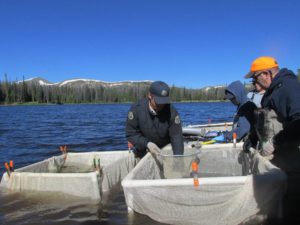 In the South Platte basin, Colorado TU and chapters worked to engage young, inner city, girls through the great outdoors by introducing them to fly fishing and conservation; CTU worked with Colorado Parks and Wildlife to reintroduce the Colorado state fish, Greenback Cutthroat Trout, to it's native watershed along the Front Range; Trout Unlimited tackled abandoned mine issues, and various chapters worked to repair their homewater streams from the devastating floods of 2013.
In the South Platte basin, Colorado TU and chapters worked to engage young, inner city, girls through the great outdoors by introducing them to fly fishing and conservation; CTU worked with Colorado Parks and Wildlife to reintroduce the Colorado state fish, Greenback Cutthroat Trout, to it's native watershed along the Front Range; Trout Unlimited tackled abandoned mine issues, and various chapters worked to repair their homewater streams from the devastating floods of 2013.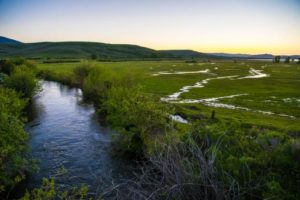 In the Colorado River basin, TU helped secure protections for the Roan Plateau and Thompson Divide from harmful oil and gas development, worked with local ranchers and farmers to improve the health of the Upper Colorado while enhancing agriculture water usage. TU also helped lead the Learning by Doing initiative that, among other things, secured $8 million in funds to protect and restore the Upper Colorado River.
In the Colorado River basin, TU helped secure protections for the Roan Plateau and Thompson Divide from harmful oil and gas development, worked with local ranchers and farmers to improve the health of the Upper Colorado while enhancing agriculture water usage. TU also helped lead the Learning by Doing initiative that, among other things, secured $8 million in funds to protect and restore the Upper Colorado River.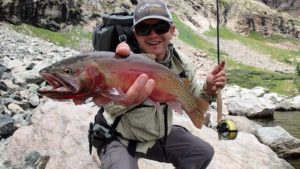 In the Rio Grande basin, Trout Unlimited worked to protect the Great Sand Dunes Cutthroat from potential changes in the environment. The Rocky Mountain Flyathlon came to Saguache for the annual race and fishing events that help raise money for Colorado TU's work in protecting native trout and their habitats. The local chapter and Trout Unlimited also worked to repair sections of the Conejos and ensure that winter flows were hospitable for trout.
In the Rio Grande basin, Trout Unlimited worked to protect the Great Sand Dunes Cutthroat from potential changes in the environment. The Rocky Mountain Flyathlon came to Saguache for the annual race and fishing events that help raise money for Colorado TU's work in protecting native trout and their habitats. The local chapter and Trout Unlimited also worked to repair sections of the Conejos and ensure that winter flows were hospitable for trout.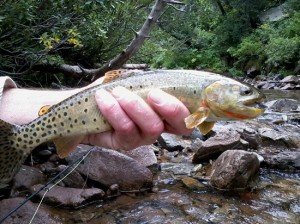 There is a small but dangerous movement brewing in this country that would transfer ownership of federal public lands to the states. TU and many other
There is a small but dangerous movement brewing in this country that would transfer ownership of federal public lands to the states. TU and many other 
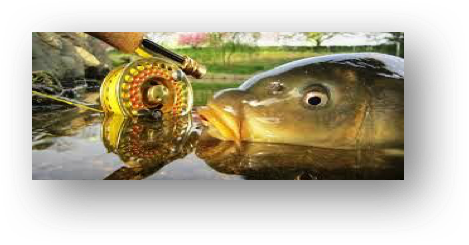 Typical targets in fly fishing are common carp and grass carp. The habitat of carp is varied and they are found in a wide variety of waters all across the United States. Most typically, they’ll be found on flat areas, such as in Lake Michigan, in slow and slack water in creeks, streams and rivers, and in just about any lake you come across.
Typical targets in fly fishing are common carp and grass carp. The habitat of carp is varied and they are found in a wide variety of waters all across the United States. Most typically, they’ll be found on flat areas, such as in Lake Michigan, in slow and slack water in creeks, streams and rivers, and in just about any lake you come across.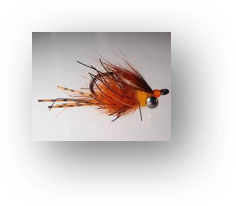 Flies
Flies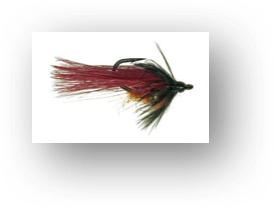 Plant material-they like fluffy cottonseeds and love mulberries, so flies that look like those two foods work
Plant material-they like fluffy cottonseeds and love mulberries, so flies that look like those two foods work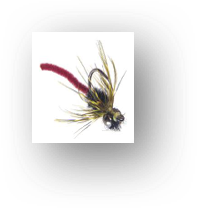 Some popular concepts: weighted flies that sink, hook point up, flies with legs that stir up mud or silt
Some popular concepts: weighted flies that sink, hook point up, flies with legs that stir up mud or silt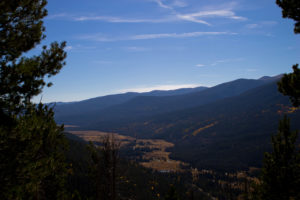 TU staff along with Grand County and a number of environmental organizations discouraged the leasing of these parcels that were close to both the Colorado River and Rocky Mountain National Park. These areas also contained cutthroat trout habitat. TU and partners commented on the potential impact to the wildlife resources and recreation in the area to the BLM throughout the NEPA process. The other organizations who commented on these potential leases played a large role in the removal of these parcels, but the sportsmen’s perspective that TU provides seemed to be especially influential in many of these efforts.
TU staff along with Grand County and a number of environmental organizations discouraged the leasing of these parcels that were close to both the Colorado River and Rocky Mountain National Park. These areas also contained cutthroat trout habitat. TU and partners commented on the potential impact to the wildlife resources and recreation in the area to the BLM throughout the NEPA process. The other organizations who commented on these potential leases played a large role in the removal of these parcels, but the sportsmen’s perspective that TU provides seemed to be especially influential in many of these efforts.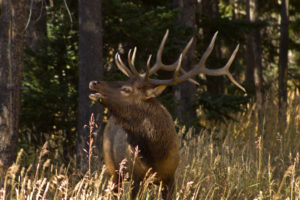 Colorado TU’s Board of Directors has voted to support HB 1321. Since 2009, CPW has cut or defunded fifty staff positions and sliced $40 million from the wildlife budget. Without new revenue, more painful cuts are inevitable.This bill gives the Parks and Wildlife Commission authority to set fees, within a cap set at a 50% increase from current levels. Importantly, it allows future license fees to be adjusted gradually over time to keep up with inflation rather than needing the legislature to approve larger increases every few years. The bill would also allow out-of-state fishing license fees for Colorado to be increased to bring Colorado’s pricing in line with peer states like Montana, Wyoming, and Utah. A senior fishing license (not more than half the regular price) would also be re-instituted. The bill also would add a new sticker and fee program for boats, to help finance inspections for aquatic nuisance species.
Colorado TU’s Board of Directors has voted to support HB 1321. Since 2009, CPW has cut or defunded fifty staff positions and sliced $40 million from the wildlife budget. Without new revenue, more painful cuts are inevitable.This bill gives the Parks and Wildlife Commission authority to set fees, within a cap set at a 50% increase from current levels. Importantly, it allows future license fees to be adjusted gradually over time to keep up with inflation rather than needing the legislature to approve larger increases every few years. The bill would also allow out-of-state fishing license fees for Colorado to be increased to bring Colorado’s pricing in line with peer states like Montana, Wyoming, and Utah. A senior fishing license (not more than half the regular price) would also be re-instituted. The bill also would add a new sticker and fee program for boats, to help finance inspections for aquatic nuisance species. 
